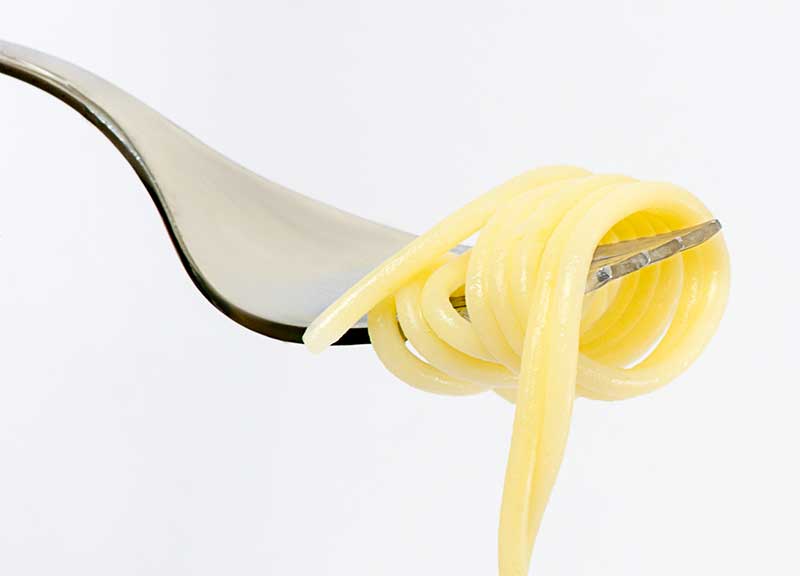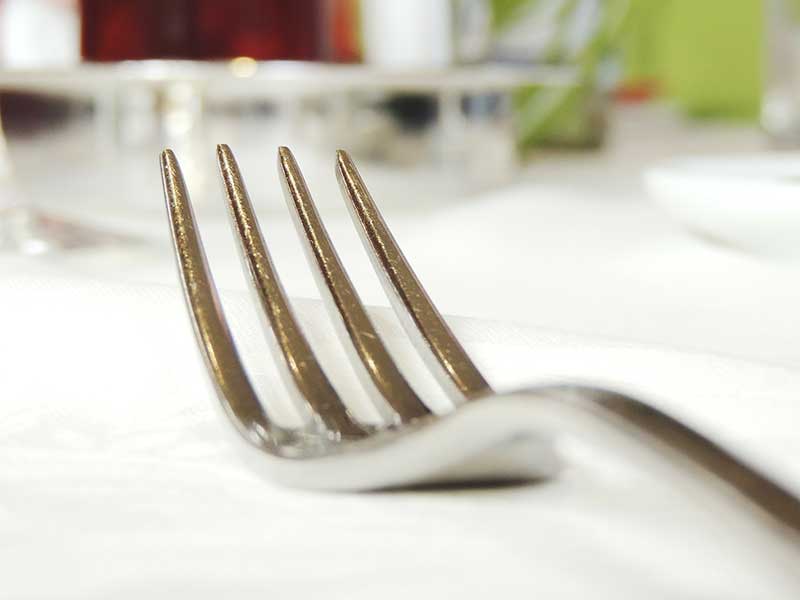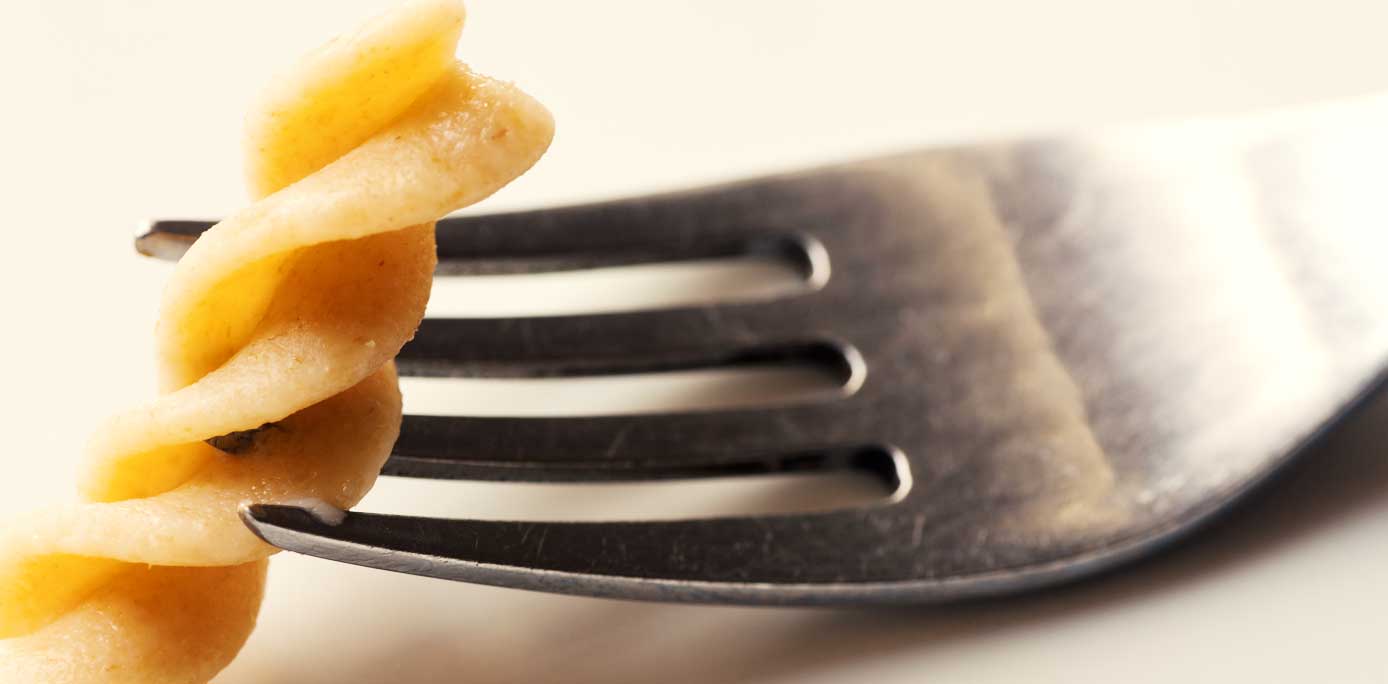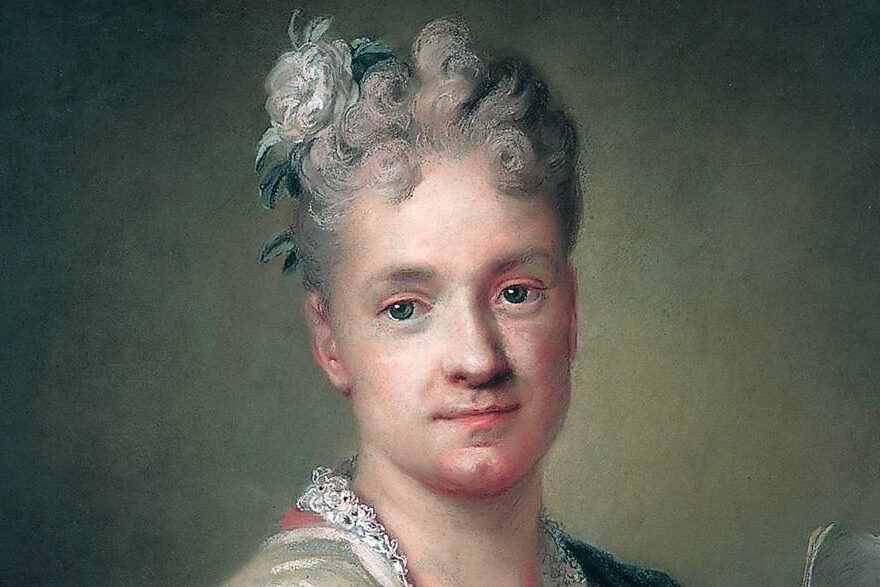In most western households, forks are a basic part of a table setting — unless you’re all eating is soup.
The relationship Italians have with the fork is certainly crucial. How could we eat spaghetti without one?
When I was a kid, my dad spent hours teaching me how to twirl my fork so that not a strand of spaghetti hung down as I lifted that incredible tool to my mouth. He also taught me you don’t use a fork and a spoon to eat pasta. Twirling spaghetti against a spoon is for children and at a certain point I had to grow up.

By the end of the 1300s, fork was commonly used by the merchants, who carried their own cutlery in a case called cadena ready to be opened at every dinner party
In his book The Civilizing Process (1939), sociologist Norbert Elias traced the “civilizing” of manners in Western Europe. He highlighted the Italian invention of the fork and its physical development as manifestations of social interaction and norms of etiquette and decorum.
Both the words forchetta and “fork” originate from the Latin word furca, which actually translates as “pitchfork”, but the kinds of forks ancient Romans used (furcula, fuscina and fuscinula) were not the type we employ today. They had one or two straight tines for the only purpose of spearing or anchoring food while cutting.
“Lady” fork made its public debut in Venice in 1003 when a Byzantine princess named Maria married Giovanni Orseolo, the son of Doge Pietro II Orseolo. The memorable meal at their wedding feast scandalized the entire Repubblica Marinara because Maria utilized a two-pronged gold fork to eat.

By the end of the 1300s, it was commonly used by the merchants, who carried their own cutlery in a case called cadena ready to be opened at every dinner party
Clergymen condemned the princess’s behavior as uptight, sinful and indecent, judging the new utensil as a diabolical instrument of perversion: it evoked the symbolism of the pitchfork associated with the devil.
In his work De Institutione Monialis, Saint Pier Damiani (1007-1072), at the time bishop of Ostia, recounted the unprecedented behavior: “She did not touch the dishes with her hands but she had the food cut in very small pieces by the eunuchs. Then she just tasted them, bringing them to her mouth with two-pronged gold forks.”
The word “forchetta” entered common usage by the end of the 1300s. One of the first recorded references in literature occurs in Il Trecentonovelle (1392), a collection of short stories written by Florentine author Franco Sacchetti, who satirized the manners of his contemporaries. One novella tells about a man named Noddo who starts to gulp down large quantities of macaroni while others still have the first bite of pasta on their fork. Noddo must have loved to eat and eat plenty. When we eat well and plenty, we are defined as buona forchetta. And when our conversation is replete with affectations — or parliamo in punta di forchetta — we figuratively talk while sitting on the tines of a fork.

Caterina De Medici introduced the fork to the French in the 1500s when she became queen of France
The new cutlery soon met a social need and was spreading fast in Italy, thanks to the sense of cleanliness and sophistication germane to Italian culture, wrote Elias.
By the end of the 1300s, it was commonly used by the merchants, who carried their own cutlery in a case called cadena ready to be opened at every dinner party. In the 1400s the Medici family had 56 silver forks in their kitchen.
Yet we seldom see the fork as an object portrayed in the countless paintings produced throughout the history of art due to the stigma attached to it.

Il doge Pietro Orseolo II, a sinistra, padre di Giovanni, la cui moglie Maria usò la forchetta per la prima volta. FOTO Sailko Taken
Some examples exist, such as the third in Sandro Botticelli’s series of paintings entitled Novella di Nastagio degli Onesti, inspired by Giovanni Boccaccio’s Decameron, which depicts a scene of the powerful Medicis sitting together with members of the Pucci family in front of an immaculate tablecloth equipped with two-pronged forks. The painting was commissioned by Lorenzo the Magnificent as a wedding gift to Giannozzo Pucci on the occasion of his marriage in 1438 with Lucrezia Bini.
By then the fork was virtually unknown in the rest of Europe.
Caterina De Medici introduced the fork to the French in the 1500s when she became queen of France. Her dowry included dozens of forks wrought by the Renaissance goldsmith Benvenuto Cellini.
The seminal book of western etiquette Il Galateo by Monsignor Giovanni Della Casa, published in Venice in 1558, helped formalize rules directed at European polite society.
However, the British were slower to accept the fork and laughed at this feminine affectation of the Italians. In 1608, English traveler Thomas Coryat took the Grand Tour of Europe and during his Italian days was astounded to see people eating with forks.
“I observed a custom in all those Italian cities and towns, through which I passed that is not used in any other country that I saw in my travels,” he wrote in his book Crudities Hastily Gobbled Up in Five Months, “The Italian does always at their meals use a little fork when they cut the meat.”
The model of the four-pointed fork we employ today was conceived in Naples under the reign of a gourmet king, Ferdinand IV of Bourbon (1759-1799). It was designed by the court chamberlain Gennaro Spadaccini to facilitate the well-known “twirl method” Italians perform on a daily basis. The Spadaccini fork helps us graciously guide the strands of spaghetti into a ball around the fork ready for the delight of the sublime.































